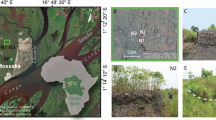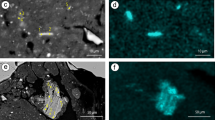Abstract
DR. R. M. S. PERRIN'S article on chalk heath soils1 does not fully explain the occurrences of these formations. His suggestion, that the chalk heaths may be formed on deposits of wind-blown loess-like material over flint pavements, perhaps in the Bronze Age, does not apply to Lullington Heath; for this area, in addition to being a fine example of chalk heath, shows also a very fine example of Celtic field patterns and has been illustrated under the name of Fore Down, Lullington2. It is probable that cultivation continued there during the Roman era, for the Britons in Sussex were not driven out or massacred by the Saxons until the third and fourth centuries A.D. Furthermore, traces of human influence are not confined merely to the field patterns; the lumps of iron slag seem to be relics of iron smelting about two thousand years ago, and the sandy patches seem to be relics of military training about fifteen years ago, for remains of the sandbags could be seen until recently.
This is a preview of subscription content, access via your institution
Access options
Subscribe to this journal
Receive 51 print issues and online access
$199.00 per year
only $3.90 per issue
Buy this article
- Purchase on Springer Link
- Instant access to full article PDF
Prices may be subject to local taxes which are calculated during checkout
Similar content being viewed by others
References
Perrin, R. M. S., Nature, 178, 31 (1956).
Curwen, E. C., “The Archæology of Sussex”, 212 (1954).
Author information
Authors and Affiliations
Rights and permissions
About this article
Cite this article
THOMAS, A. Nature of Chalk Heath Soils. Nature 179, 545–546 (1957). https://doi.org/10.1038/179545a0
Issue Date:
DOI: https://doi.org/10.1038/179545a0
Comments
By submitting a comment you agree to abide by our Terms and Community Guidelines. If you find something abusive or that does not comply with our terms or guidelines please flag it as inappropriate.



